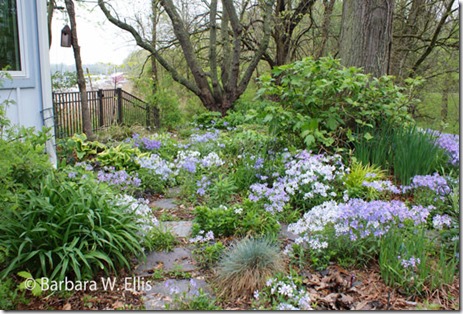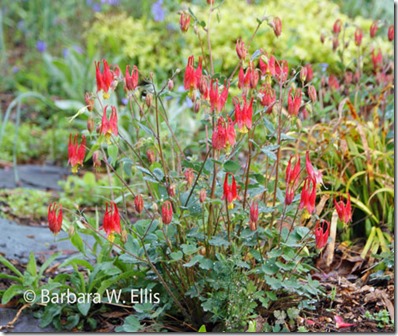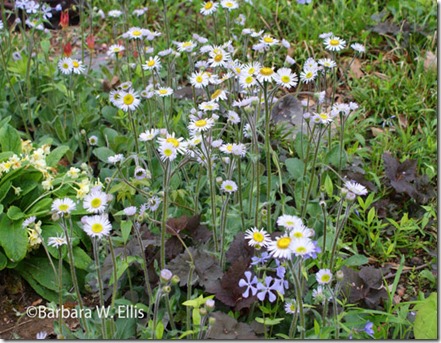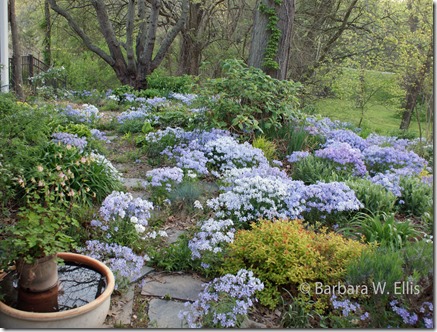Although it is dreary and rainy today, I am happy because we are getting some much-needed rain. Rain or shine, this time of year my garden looks both wonderful and riotous. I thought I would share a picture of what the front garden looks like this week, plus shots of a couple major players.

Above: Wild blue phlox (Phlox divaricata) in shades of purple and white fill the garden this time of year. Phlox self sows and pops up in shady parts of the front garden as well as the areas (toward the foreground) that receive a good amount of sun, meaning 6 or 7 hours of direct sun per day.

Above: I love full size wild columbine (Aquilegia canadensis) and have it everywhere in the garden, since it is a generous self-seeder. The plant above is ‘Little Lanterns’ (A. canadensis ‘Little Lanterns’) a dwarf cultivar that is 10 to 12 inches tall, self sows, and reliably comes true from seed.

Above: This is one of my new favorites: Robin’s plantain (Erigeron pulchellus ‘Lynnhaven Carpet’). Plants are currently covered with cheerful yellow and white daisies that arise from ground-hugging rosettes of gray-green leaves. Flowers are maybe 8 to 10 inches tall, but the leaves are only about 2 or 3 inches tall. (If it wasn’t raining right this minute, I would go out and measure!) This native species thrives in part shade to shade, tolerates a wide range of conditions, and spreads to form a nice, dense carpet.
The purple leaves in the photograph above are purple Japanese parsley (Cryptotanea japonica ‘Purpurea). They self sow and pop up here and there. I love the rich color of their leaves. (I don’t think they are edible despite the common name.) I was planting a garden at a friend’s house this morning in the rain, and I realized that some of them had piggy-backed their way to her a year or so ago with divisions of other plants.
Enjoy the rain!
Read Full Post »













